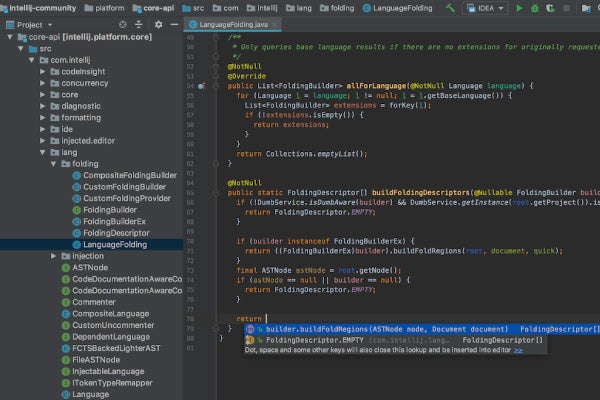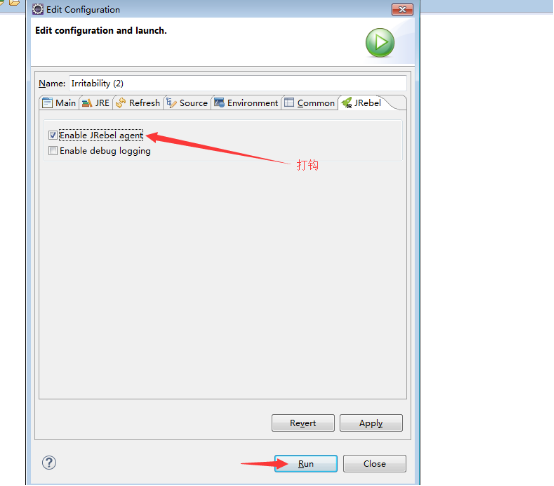

- #Jrebel eclipse plugin tutorial how to
- #Jrebel eclipse plugin tutorial android
- #Jrebel eclipse plugin tutorial code
- #Jrebel eclipse plugin tutorial windows
#Jrebel eclipse plugin tutorial android
See the Android Gradle plugin 3.0 migration guide. implemention instead of compile, annotationProcessor instead of apt, etc). I have had no problems with Google’s Dagger, but be aware of the API changes for the Android Gradle plugin 3.0 in the gradle build file (e.g. You may consider replacing RxJava with the more light weight LiveData for activities and fragments, and they can be adapted to each other. If you use RxJava, then this will of course continue to work as it is compatible with Java 6. This is another alternative to design patterns such as MVP or MVVM with Databinding. I have also been using some of Google’s Architecture Components, but only the ViewModel and LiveData. If anyone has tried this, please let me know how well it works. I won’t be using it for a while since it requires the minSkdVersion to be 26. The authors of the JUnit5 plugin have stated that they now have support for JUnit 5 in instrumentation tests. Instrumentation tests still depend on JUnit 4 and the AndroidJUnitRunner. Some Rules may be supported with the JUnit 5 migration support, but if not you will have to wait until the Rules are rewritten as extensions or not use the Rules at all. However if you use JUnit 4 Rules in your tests, there is limited support in JUnit 5 as they are meant to be replaced with extensions. JUnit 5 has also been released recently, and with the help of this plugin you can use it for unit testing in Android Studio.
#Jrebel eclipse plugin tutorial code
Some older libraries and code may have some problems with this build stage. The Jack tool chain has been replaced with the desugar tranformation process to support Java 8. Some ideas floated around to support older API version, are to have min API version flavors or do Build.VERSION checks for the API version in the code to provide alternative code paths. Since devices running Nougat or Oreo are still in the minority, supporting older versions will continue to be an issue for a while if you want to use Java 8. Just be aware that many of the Java 8 language features will only be available if the minSkdVersion is 24. Finally I can say goodbye to RetroLambda (although many thanks to the authors for this very useful library). Java 8 was released back in 2014, and with Android Studio 3.0 it is finally supported in Android. Hopefully this will be useful for anyone thinking of upgrading from Android Studio 2.x. This is just some initial comments on using some common and new Android tools and libraries with the 3.0 version of Android Studio and the associated Android Gradle plugin. I have been using Android Studio 3.0 since since the alpha versions, and it is good to see it finally released.

#Jrebel eclipse plugin tutorial windows
Here is an example using the additional ‘addRebelAgent’ task that I specified earlier, that I use on my Windows 64 machine. Gradle build files, command line, build scripts, etc. Once set up, that allows you to use the environment variable in multiple ways, e.g. However the path is still hard-coded, which is something that should be avoided if possible.Īnother way to specify the path is to use a system environment variable to point to where JRebel is installed. Putting the path to the JRebel library to use as the agent in a properties file allows multiple developers to have their own version. Gradle bootRun -PaddJRebel=true Finding the Rebel Base Then to use JRebel you just need to add the extra property. I have also added a debug message if the ‘rebelAgent’ property is not available.Īnother way would be to pass an optional property to the ‘bootRun’ task to use as a flag whether to add JRebel or not. Now running ‘bootRun’ would start the app normally, and if you want JRebel then use the ‘rebelRun’ task instead. There would be several ways of doing this, but one would be to add the JRebel startup configuration in an optional task. Make JRebel Optionalįor instance, what if you don’t always want JRebel everytime you start the app with ‘ bootRun’? JRebel plugins for IDE’s like Intellij IDEA are smart enough to give you the option of running your app with or without JRebel However there are several ways to improve on this.

Then set the property in gradle.properties: It is basic but works fine.Īll you have to do is to add a few lines to adle:
#Jrebel eclipse plugin tutorial how to
There is some documentation on how to add JRebel to a Spring Boot app that uses Gradle as the build tool.


 0 kommentar(er)
0 kommentar(er)
